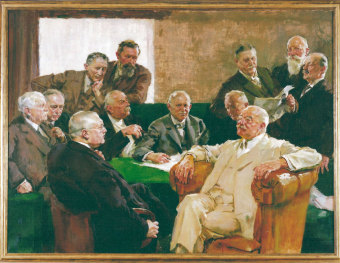I.G. Farben

© HistoCom GmbH
In the mid-nineteenth century, chemists and entrepreneurs in Germany founded the first chemical factories, which initially were devoted to the manufacture of synthetic dyes. The biggest of these firms banded together in 1925 to found I.G. Farbenindustrie AG, one of the leading chemical corporations of the interwar period. During the National Socialist era, the conglomerate played a major part in the “Third Reich’s” policy of rearmament and in appropriations in the occupied countries. It used concentration camp prisoners to construct its I.G. Auschwitz plant. Company executives were defendants in the I.G. Farben Trial at Nuremberg in 1947/48. Immediately after the war ended, the Allies “decartelized” I.G. Farben and split it up into its original constituent companies. I.G. Farben in Liquidation continued in existence until 2003.
















